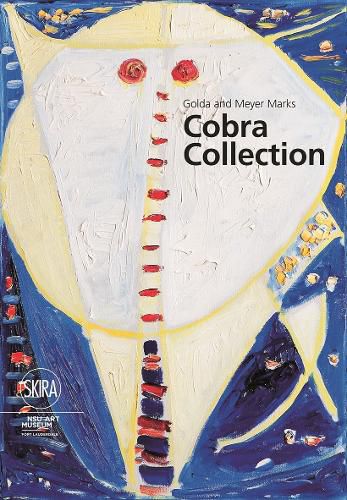Readings Newsletter
Become a Readings Member to make your shopping experience even easier.
Sign in or sign up for free!
You’re not far away from qualifying for FREE standard shipping within Australia
You’ve qualified for FREE standard shipping within Australia
The cart is loading…






The book features works from the Golda and Meyer Marks Cobra Collection, the largest CoBrA art collection in America.
The NSU Art Museum Fort Lauderdale collection of Cobra art includes more than 1,600 works and is the largest museum collection in the United States, thanks in large part to Golda and Meyer Marks donating their collection from 1978 until their deaths in 1998 and 1991, respectively.
Cobra art was born as an art collective in 1948 in reaction to the devastation of World War II and named for its artists’ home cities (Copenhagen, Brussels, Amsterdam). Cobra art is raw, vital, spontaneous, and filled with dynamic abstract and semi-abstract forms. Its artists worked together and often collaboratively before going their separate ways in 1951, to achieve a new means of expression that challenged traditions and the constraints on artistic expression they had experienced during World War II.
The movement greatly influenced the development of European modern art as well as contemporary art in America and Europe. The study of the Cobra art movement has led to a greater understanding of how acts of resistance and political movements continue to influence current events.
This monograph of the museum’s Cobra collection includes text by renowned experts in the field, 150 illustrations and detailed entries on 29 artists.
$9.00 standard shipping within Australia
FREE standard shipping within Australia for orders over $100.00
Express & International shipping calculated at checkout
The book features works from the Golda and Meyer Marks Cobra Collection, the largest CoBrA art collection in America.
The NSU Art Museum Fort Lauderdale collection of Cobra art includes more than 1,600 works and is the largest museum collection in the United States, thanks in large part to Golda and Meyer Marks donating their collection from 1978 until their deaths in 1998 and 1991, respectively.
Cobra art was born as an art collective in 1948 in reaction to the devastation of World War II and named for its artists’ home cities (Copenhagen, Brussels, Amsterdam). Cobra art is raw, vital, spontaneous, and filled with dynamic abstract and semi-abstract forms. Its artists worked together and often collaboratively before going their separate ways in 1951, to achieve a new means of expression that challenged traditions and the constraints on artistic expression they had experienced during World War II.
The movement greatly influenced the development of European modern art as well as contemporary art in America and Europe. The study of the Cobra art movement has led to a greater understanding of how acts of resistance and political movements continue to influence current events.
This monograph of the museum’s Cobra collection includes text by renowned experts in the field, 150 illustrations and detailed entries on 29 artists.